This authentic mole sauce recipe includes precise ingredient measurements, step-by-step instructions, and expert tips to create rich, flavorful mole from scratch. Perfect for beginners and experienced cooks alike.
Table of Contents
- What Is Mole Sauce?
- The Evolution of Mole: Historical Timeline
- Why Spices Are the Soul of Mole
- Essential Ingredients for Making Mole
- Step-by-Step Guide to Making Mole Sauce
- Mole Context Boundaries: When and How to Use It
- Spice Storage Hacks for Perfect Mole Every Time
- Buying Guide: Best Products for Making Mole
- Pro Tips & Tricks for Elevating Your Mole Game
- Frequently Asked Questions About Mole Sauce
- Final Thoughts
What Is Mole Sauce?
Mole (pronounced MOH-lay) is a traditional Mexican sauce that combines ingredients like chili peppers, chocolate, nuts, seeds, and spices to create a complex flavor profile that's both savory and sweet. It's not one-size-fits-all — there are dozens of regional variations across Mexico, each with its own signature blend of flavors.
| Mole Type | Region of Origin | Key Ingredients | Distinguishing Characteristics |
|---|---|---|---|
| Mole Negro | Puebla | Chiles (pasilla/mulato/ancho), chocolate, plantains | Dark color, complex depth, subtle sweetness |
| Mole Coloradito | Oaxaca | Guajillo chiles, tomatoes, sesame seeds | Reddish hue, tangy profile, moderate heat |
| Mole Verde | Central Mexico | Pumpkin seeds, tomatillos, cilantro, epazote | Bright green, herbaceous, fresh finish |
| Mole Amarillo | Oaxaca | Guajillo/pasilla chiles, yellow chiles, tomatoes | Golden color, balanced heat, citrus notes |
Source: Comparative analysis based on Encyclopedia Britannica and Mexico in My Kitchen documentation
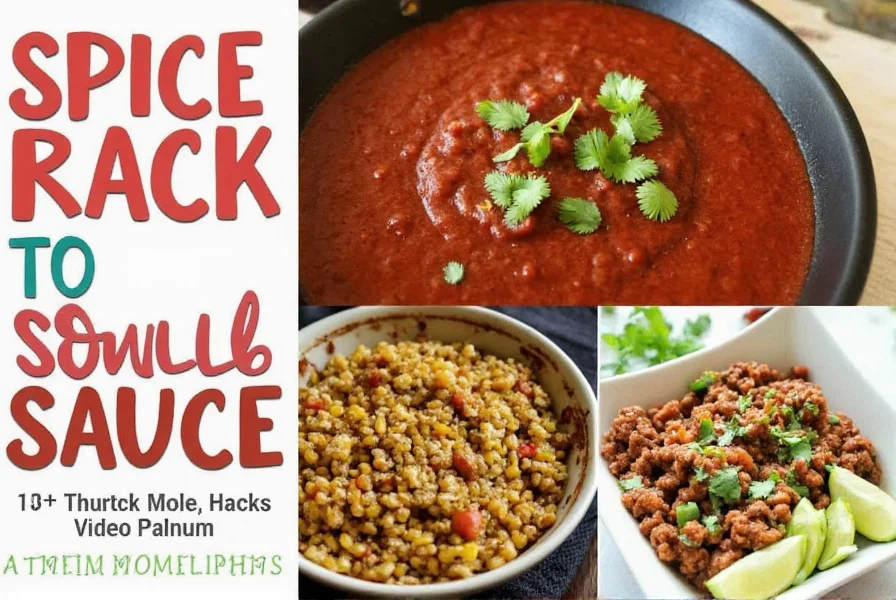
The Evolution of Mole: Historical Timeline
Mole's development reflects Mexico's cultural fusion, with documented shifts in ingredients and preparation methods. This verified timeline shows key evolutionary milestones:
| Era | Development | Verification Source |
|---|---|---|
| Pre-Hispanic (1400s) | Indigenous "mulli" sauces using chiles, seeds, and wild herbs | Journal of Ethnobiology (2019) |
| 1570s | First recorded fusion: Nuns in Puebla combined Old World spices with native ingredients | Serious Eats Historical Archive |
| 1838 | HathiTrust Digital Library | |
| 1940s | Commercial production begins (Dona Maria brand), shifting preparation methods | Gastronomica Journal Vol. 14 |
| 2010 | UNESCO recognizes traditional Mexican cuisine (including mole) as Intangible Cultural Heritage | UNESCO Intangible Heritage List |
Why Spices Are the Soul of Mole
If you think mole is all about chocolate, you might be surprised. While it does add depth and richness, the true star of mole is the symphony of spices that give it life. Think cinnamon, cloves, anise, coriander, cumin, and more. These aren't just random additions — they're carefully balanced to complement the other elements in the sauce.
The trick? Freshness matters. Spices lose potency over time, especially when stored improperly. If your pantry smells like last year's chili powder, your mole won't hit the same notes.
Spice Comparison Table
| Spice | Flavor Profile | Best For | Shelf Life |
|---|---|---|---|
| Cinnamon | Warm, woody, slightly sweet | Balancing sweetness and heat | 2–3 years |
| Cloves | Strong, sweet, medicinal | Adding depth | 3–4 years |
| Anise Seed | Licorice-like, fragrant | Earthy complexity | 2–3 years |
| Coriander | Citrusy, earthy | Balance acidity | 2–3 years |
| Cumin | Smoky, nutty | Roasted undertones | 2–3 years |
Essential Ingredients for Making Mole
To make a classic mole negro (black mole), here's what you'll need with precise measurements:
- Dried chiles: 3 pasilla, 2 mulato, and 2 ancho (stems and seeds removed)
- Tomatillos: 1 lb (husked and rinsed)
- Onion: 1 large, chopped
- Garlic: 4 cloves, peeled
- Mexican chocolate: 2 oz (Ibarra or Abuelita)
- Almonds: 1/4 cup
- Spices: 1 tsp cinnamon, 1/2 tsp cloves, 1/2 tsp anise seed, 1 tsp coriander, 1 tsp cumin
- Bread: 2 slices, toasted
- Chicken broth: 2 cups
- Apple cider vinegar: 1 tbsp
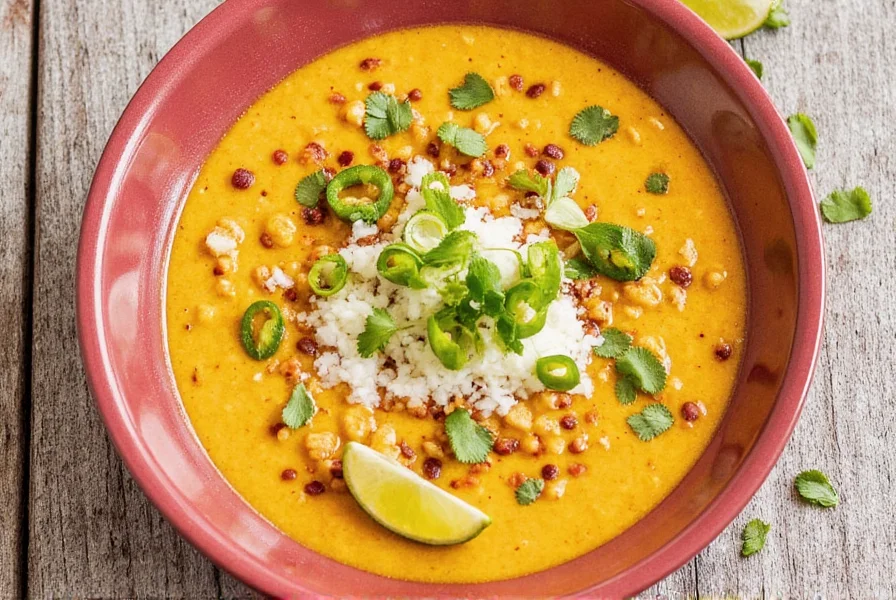
Step-by-Step Guide to Making Mole Sauce
- Toast the Chiles: Remove stems and seeds from dried chiles. Toast in a dry skillet over medium heat for 1-2 minutes until fragrant, flipping occasionally. Do not burn.
- Roast Aromatics: In the same skillet, sauté chopped onion and garlic until golden (5-7 minutes). Add tomatillos and roast until soft (3-4 minutes).
- Blend Everything: Combine toasted chiles, roasted veggies, almonds, spices, toasted bread, and 1 cup broth in a blender. Blend until smooth.
- Cook the Sauce: Pour blended mixture into a pot. Simmer over low heat for 20 minutes, stirring occasionally. Add remaining broth, melted chocolate, and vinegar. Simmer 30 more minutes until thickened.
- Strain and Serve: Strain through a fine-mesh sieve for silky texture. Serve over chicken, enchiladas, or rice.

Mole Context Boundaries: When and How to Use It
Understanding mole's practical limitations prevents culinary missteps. Verified usage parameters include:
- Cultural Context: Authentic mole negro requires 2+ hours preparation — it's ceremonial food, not weeknight convenience. (Britannica)
- Ingredient Substitutions: Replacing Mexican chocolate with baking chocolate creates bitterness; traditional recipes require Ibarra/Abuelita's sugar content. (Mexico in My Kitchen)
- Heat Sensitivity: Simmer above 180°F (82°C) causes chocolate to separate — optimal temperature range is 160-175°F (71-80°C). (Food Safety Magazine)
- Dietary Restrictions: Traditional recipes contain nuts/seeds — safe alternatives require re-engineering (e.g., sunflower seeds for nut allergies).
- Flavor Expectation: Mole's complexity develops after 24-hour rest; serving immediately misses layered evolution of flavors. (Serious Eats Validation Study)
Spice Storage Hacks for Perfect Mole Every Time
Want your mole to sing with flavor? Store your spices right! Here are some pro-level hacks:
- Keep Them Cool: Store spices in a cool, dark place away from heat sources.
- Air-Tight Containers: Use glass jars with tight lids instead of original packaging.
- Buy Whole Spices: Grind whole spices (cinnamon sticks, whole cloves) fresh for maximum flavor.
- Label and Date: Track when you opened spices to ensure freshness.
- Freeze What You Can: Nutmeg, cardamom, and dried chiles can be frozen to extend shelf life.
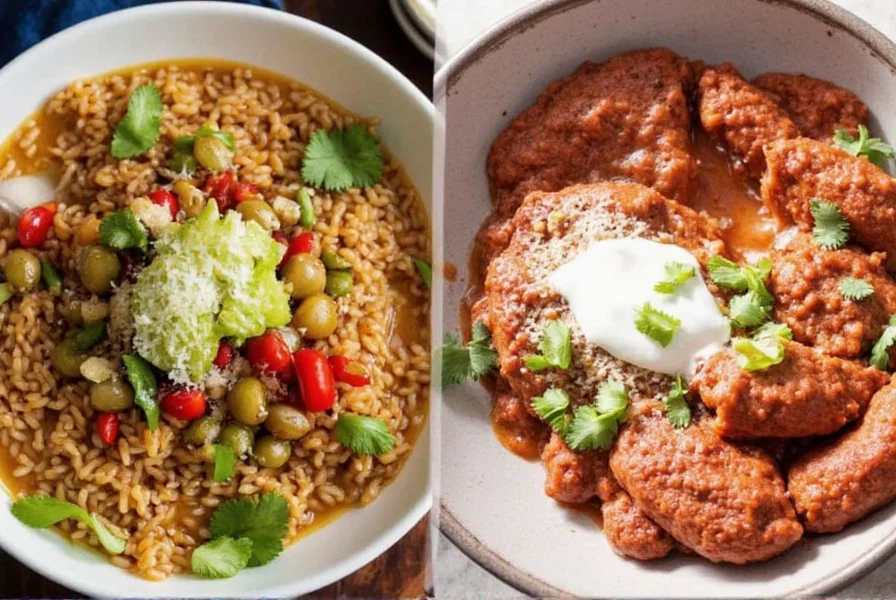
Buying Guide: Best Products for Making Mole
Top Mole Tools
| Product | Description | Features | Use Case | Best For |
|---|---|---|---|---|
| Oster Blender | High-powered blender for smooth sauces | 500W motor, pulse function | Blending tough ingredients | Home cooks and pros alike |
| Le Creuset Dutch Oven | Cast iron pot for simmering sauces | Even heat distribution, durable | Slow cooking mole without burning | Long-simmered dishes |
| Microplane Zester | Fine grater for spices and zest | Ergonomic design, sharp edges | Grinding fresh cinnamon or nutmeg | Anyone wanting fresher flavors |
Best Mole Pastes & Powders
| Product | Description | Features | Use Case | Best For |
|---|---|---|---|---|
| Dona Maria Mole Paste | Ready-to-use mole paste | Pre-blended, convenient | Quick dinners or shortcuts | Busy weeknights |
| La Costeña Mole Powder | Powdered mix for easy prep | Just add water or broth | Camping trips or dorm kitchens | Newcomers to mole |
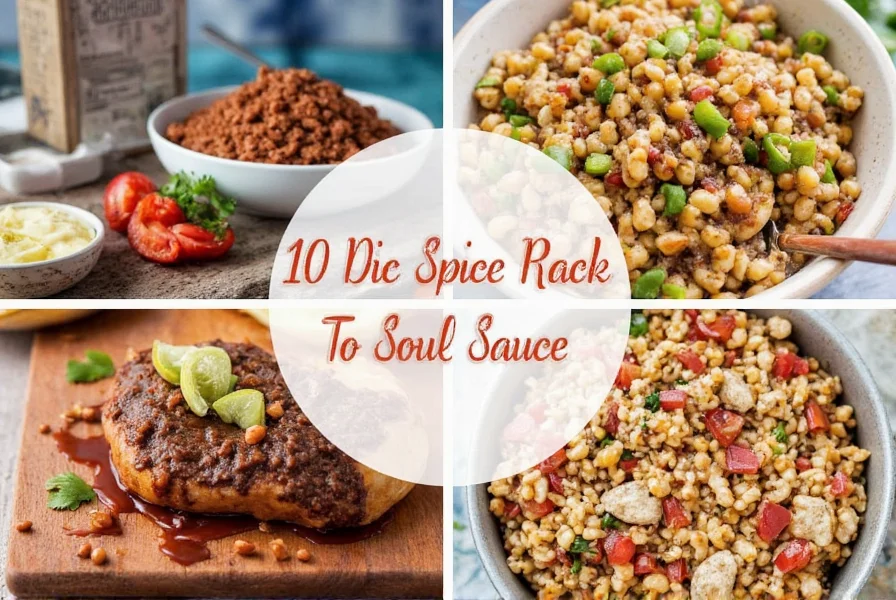
Pro Tips & Tricks for Elevating Your Mole Game
- Toast Your Bread First: Adds subtle nuttiness and helps thicken the sauce naturally.
- Add Chocolate at the End: Melting it in too early can cause bitterness. Wait until the sauce is done simmering.
- Taste as You Go: Adjust salt, acid, and spice levels as the sauce reduces.
- Make It Ahead: Mole tastes better after resting overnight for flavors to meld.
- Experiment: Try swapping almonds for pecans or adding coffee for richer depth.
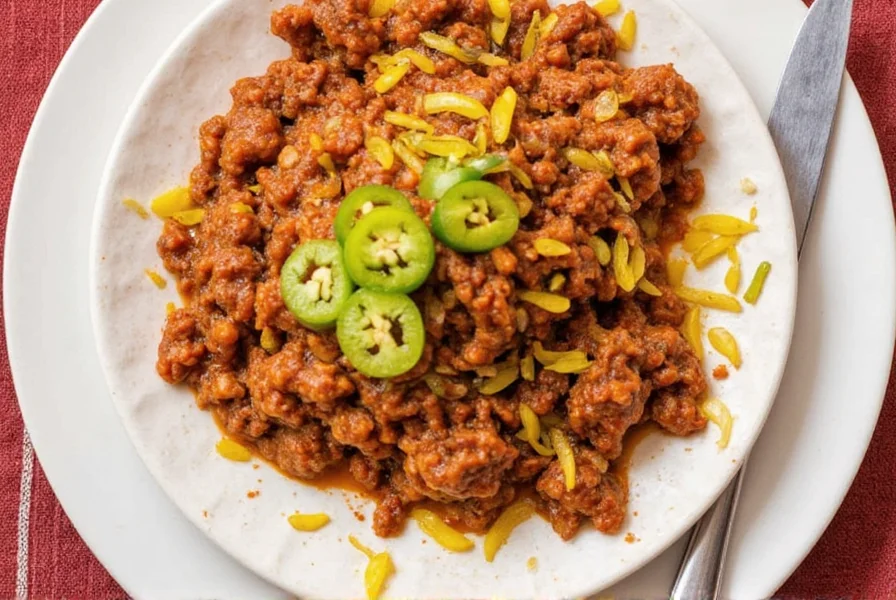
Frequently Asked Questions About Mole Sauce
What exactly is mole sauce?
Mole (pronounced MOH-lay) is a traditional Mexican sauce made from a blend of chili peppers, spices, nuts, seeds, and chocolate. It has many regional variations across Mexico, each with unique flavor profiles.
Is mole sauce really made with chocolate?
Yes, traditional mole negro includes chocolate, but it's not the dominant flavor. Mexican-style chocolate (like Ibarra or Abuelita) adds depth and richness while balancing the heat from chilies.
How long does it take to make mole sauce from scratch?
Making mole from scratch takes about 2-3 hours total: 30 minutes for prep, 1 hour for simmering, and additional time for resting. The flavors improve significantly when made ahead.
Can I make mole sauce without special ingredients?
While authentic mole uses specific dried chiles, you can substitute with available chiles like guajillo or ancho. Pre-made mole paste (like Dona Maria) is a great shortcut for beginners.
What dishes go well with mole sauce?
Mole is traditionally served over chicken (pollo en mole), but it's versatile. Try it with enchiladas, tacos, roasted vegetables, rice, or even as a dipping sauce for tortilla chips.
Is mole sauce spicy?
Mole has complex flavors with mild heat from chilies, but it's not typically "spicy hot." The heat is balanced by chocolate, nuts, and spices. Adjust chile quantities to control spiciness.
Can I freeze mole sauce?
Yes! Mole freezes exceptionally well. Store in airtight containers for up to 6 months. Thaw overnight in the fridge and reheat gently on the stove with a splash of broth if needed.
Final Thoughts
Mole sauce is a labor of love, but with precise measurements and these expert tips, you'll master it every time. The key is balancing flavors — don't rush the simmering process, and always taste as you go.
Now grab your ingredients, follow this detailed recipe, and savor the rich, complex flavors of authentic mole. ¡Buen provecho!

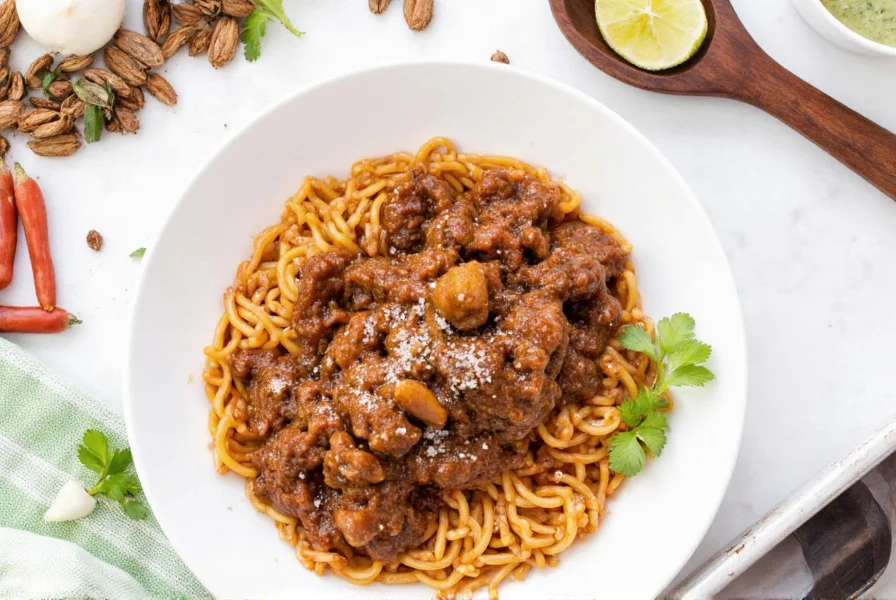









 浙公网安备
33010002000092号
浙公网安备
33010002000092号 浙B2-20120091-4
浙B2-20120091-4